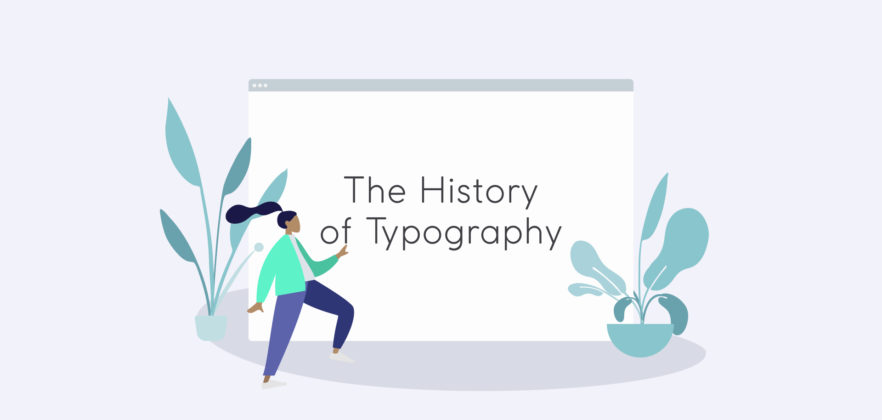
Oct 13
Hype for Type: The History [Video]
To Helvetica and Back
During our quest to add a typographer to our team we stumbled on a stop motion video about the history of typography. We watched, and found ourselves shouting each font name out loud. Forgive us for being such design groupies. The video, created by Ben Barrett-Forrest is a paper letter animation. Tracing the history of type from Gutenberg to Helvetica.
Font as we know it began with Blackletter. The typeface, designed to emulate the handwriting of contemporary scribes was heavy and at times difficult to read. As a result, a fellow inspired by Italian architecture came along with an improved model. Enter Roman type, or typography 2.0, a clean more legible means of lettering.
Let's talk about angles
Italics, aptly named for its country of origin, were inspired by calligraphic writing. First used by Aldus Manutis and his press in Venice in 1500, the noble type has come a long way. While today italics are used to denote a change in tone or emphasize importance these were not the original intentions of the slant. Italics were born for much more practical purposes, to fit more words on the page.
We *know* you know that our typography obsessed crew are already experts, but if you aren't, check the video out.
What have we learned from the best five minutes of internet time we spent this week? Type is timeless.
Sans Tradition
Ben Barrett-Forrest also pays tribute to the holy trinity of type: old style, transitional and modern. Ben's video traces the ways in which technology has led to font innovations. Especially relevant is the emergence of sans serifs. A kind of guillotine towards tradition, sans serif also saw the removal of extended lines within typography. This instantly modernized lettering and consequently this family of fonts has become the most prevalent way to display text on computer screens.
In addition, Futura, one of the most widely known and used fonts (looking at you IKEA) was inspired by the clean lines and geometric shapes of the 20th century Bauhaus movement. Paul Renner who devised the font in 1927 believed modern typefaces should express modern models rather than pay tribute to the past. Yet, Renner's Futura finds its origins in classic serifs.
A Digital Revolution
Typography continues evolving in our screen-dominated world. Web fonts revolutionized digital design, freeing creators from the constraints of system fonts. Google Fonts launched in 2010, bringing professional typography to the masses. Variable fonts emerged in 2016, enabling infinite variations between weights and styles.
Modern designers wield typography as both art and science. We select fonts that perform across devices while maintaining brand integrity. Mobile-first design pushed typography toward clarity and readability. Yet the principles laid down by historical innovators still guide our choices.
RE:STUDIO bridges this typographic heritage with modern digital needs. Every font choice serves both form and function. Whether crafting WordPress layouts or Shopify stores, we honor type's evolution while pushing its boundaries forward.
Credits
A paper-letter animation about the history of fonts and typography.
291 Paper Letters.
2,454 Photographs.
140 hours of work.
Created by Ben Barrett-Forrest
© Forrest Media - 2013


